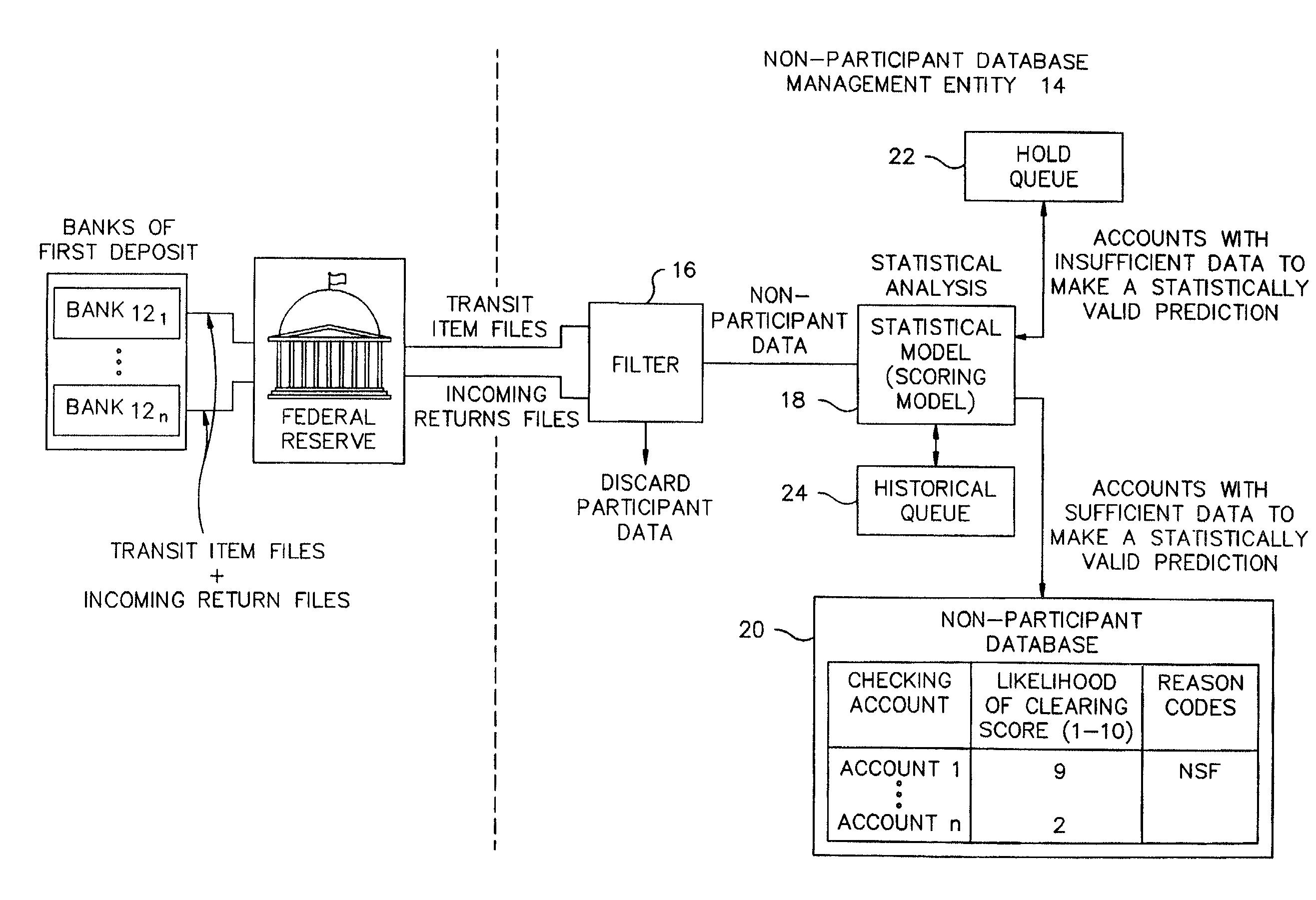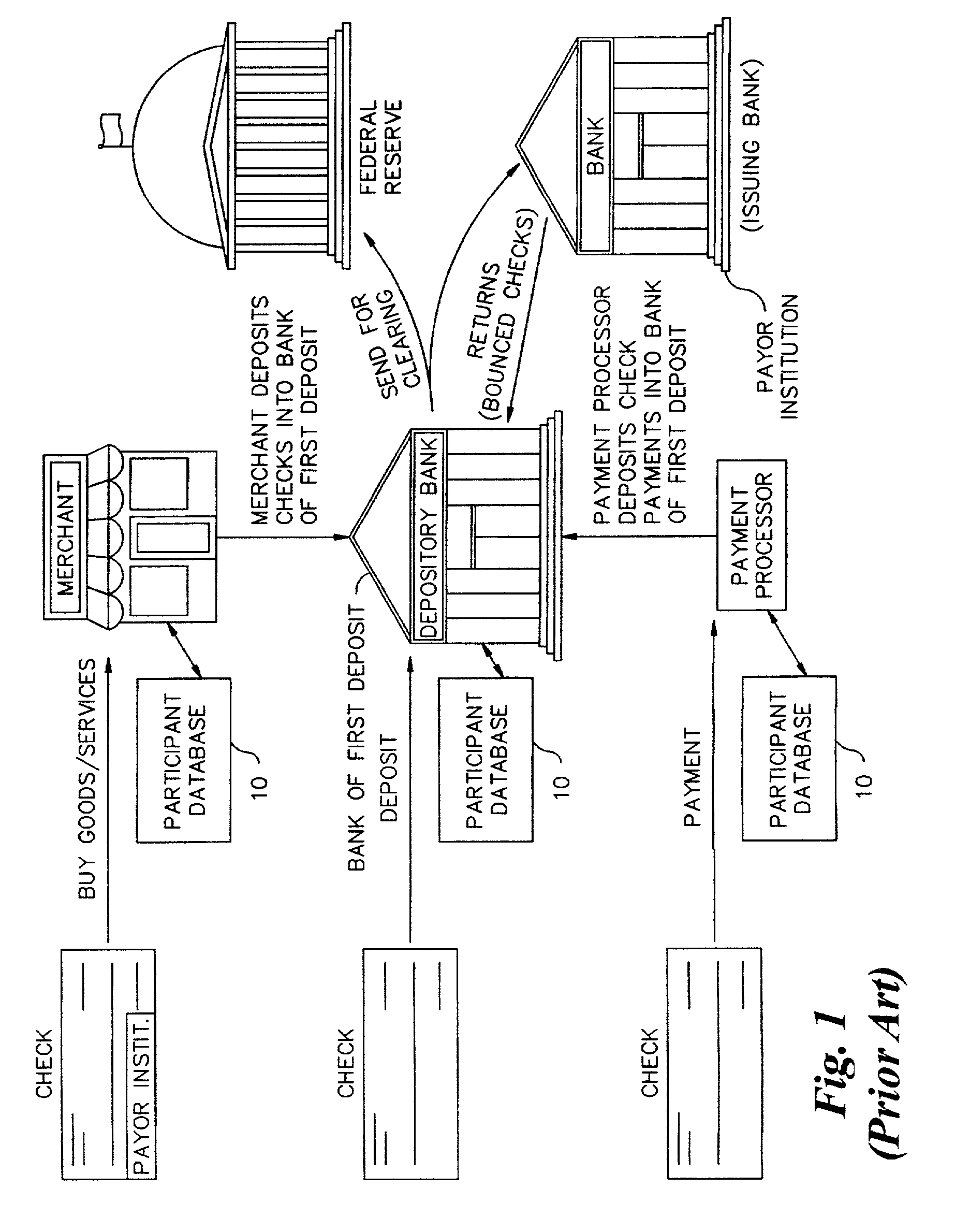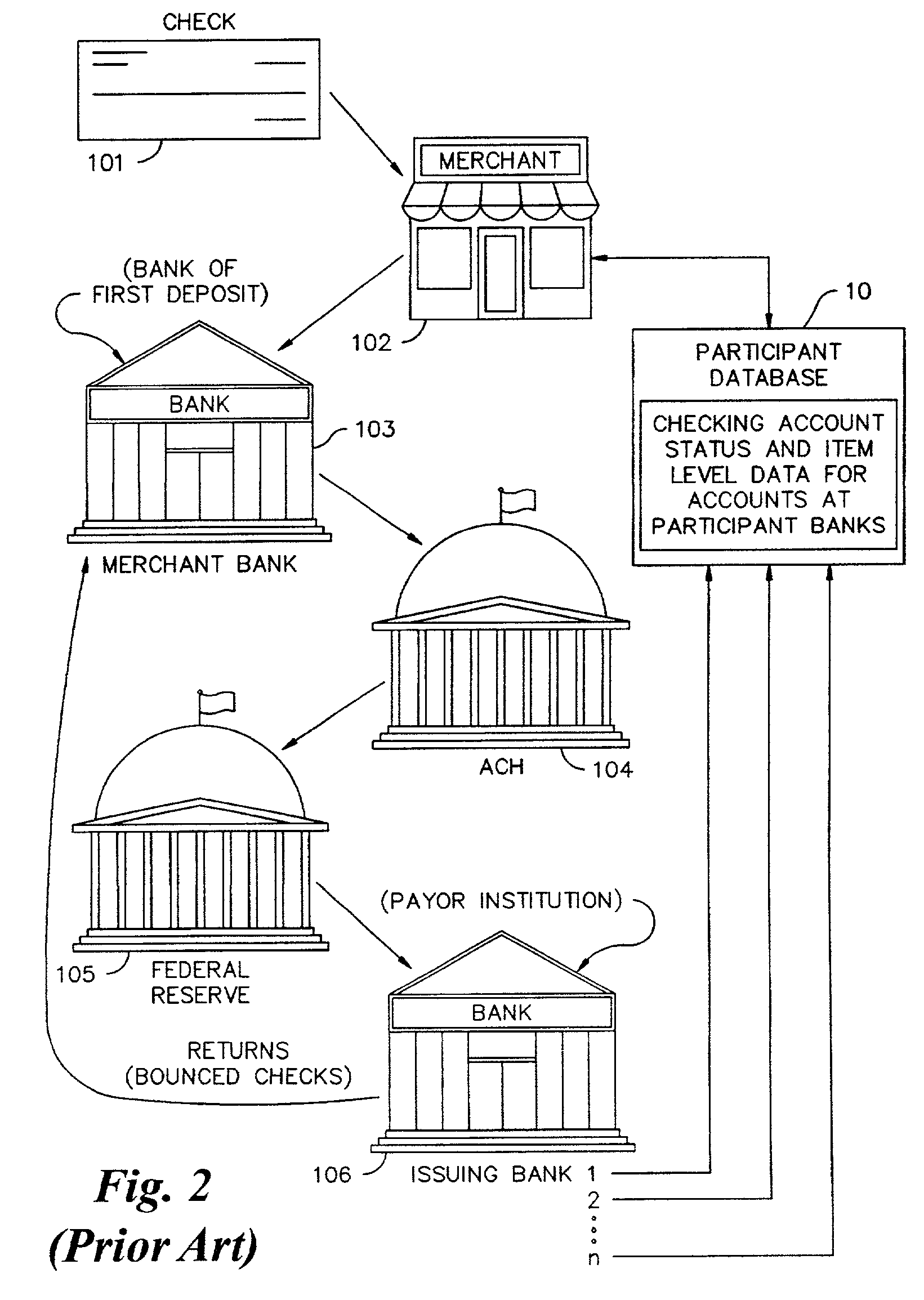Database for check risk decisions populated with check activity data from banks of first deposit
a check risk and activity data technology, applied in the field of data base for check risk decisions populated with check activity data from banks of first deposit, can solve the problems of not all checking accounts have checking account status and item level data, limited in scope, and may become stale or outdated
- Summary
- Abstract
- Description
- Claims
- Application Information
AI Technical Summary
Benefits of technology
Problems solved by technology
Method used
Image
Examples
Embodiment Construction
[0043]Certain terminology is used herein for convenience only and is not to be taken as a limitation on the present invention. In the drawings, the same reference letters are employed for designating the same elements throughout the several figures.
1. Overview of Present Invention
[0044]Banks of First Deposit receive incoming returns on a daily basis for checks that they previously submitted for clearing. The checking account data from the incoming returns are received in “incoming returns files.” (No “early notice returns” are included in these files.) Each business day, Banks of First Deposit also receive a large volume of checks that they accept for deposit from merchants, consumers, small businesses, corporations, and payment processors. These checks are sent for clearing, typically on a daily basis. (“On us” checks are cleared within the bank.) The checks that the Banks of First Deposit receive and which must be cleared are “transit items,” as discussed above. Checking account d...
PUM
 Login to View More
Login to View More Abstract
Description
Claims
Application Information
 Login to View More
Login to View More - R&D
- Intellectual Property
- Life Sciences
- Materials
- Tech Scout
- Unparalleled Data Quality
- Higher Quality Content
- 60% Fewer Hallucinations
Browse by: Latest US Patents, China's latest patents, Technical Efficacy Thesaurus, Application Domain, Technology Topic, Popular Technical Reports.
© 2025 PatSnap. All rights reserved.Legal|Privacy policy|Modern Slavery Act Transparency Statement|Sitemap|About US| Contact US: help@patsnap.com



